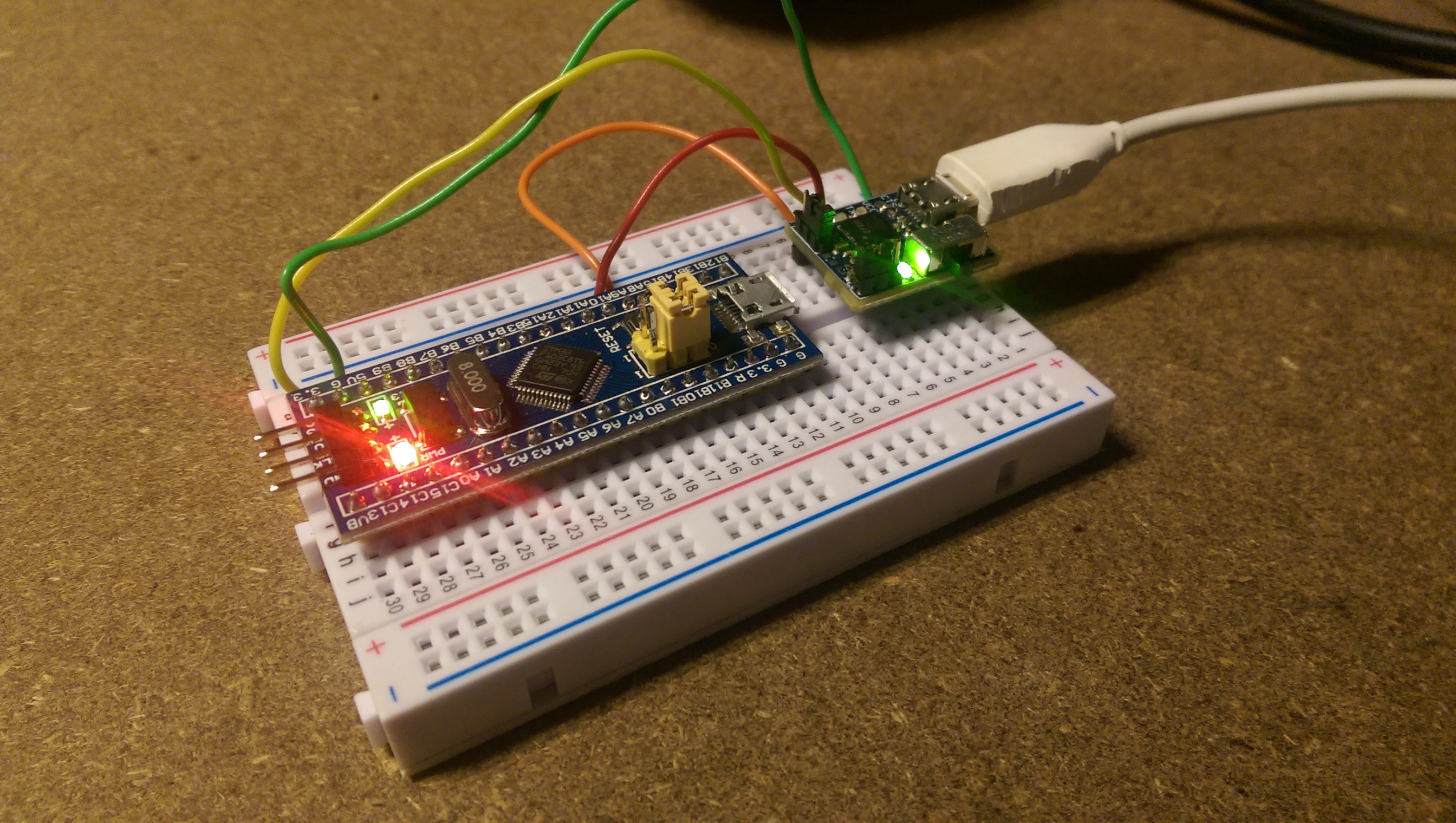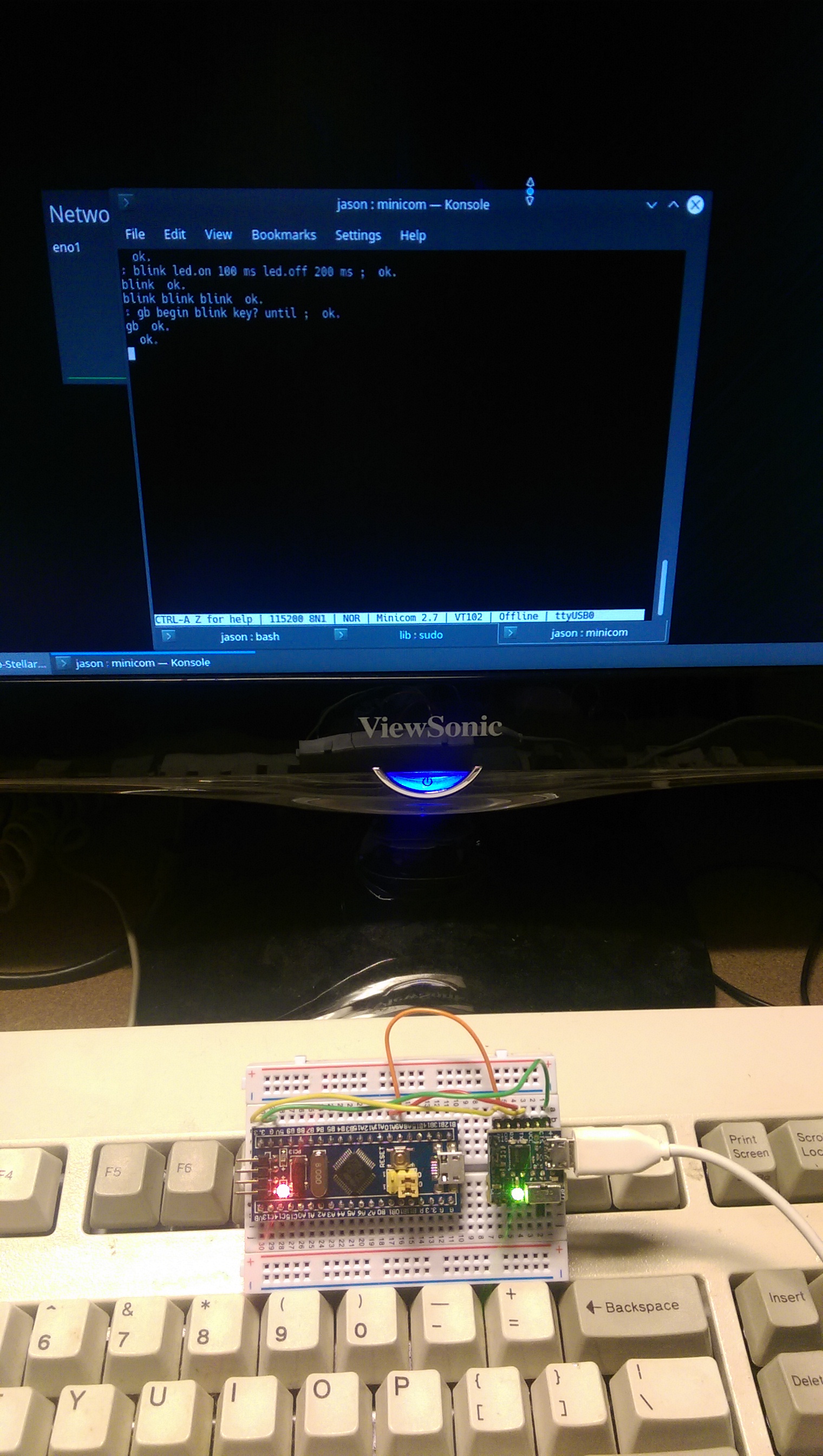Experimenting with FORTH
I’ve come across the FORTH programming language a few times in the past (notably as the foundation one of my favorite personal computers) and while it seemed interesting, I couldn’t come up with an application for it that justified the time I’d need to invest learning it. More recently I came across a series of articles on Hackaday centered around running FORTH on STM32-based microcontrollers. This intrigued me because I’ve been on the lookout for a more “interactive” programming environment for microcontroller work (vs. the typical code-build-flash-test-repeat cycle). The ability write code directly on the controller itself and tweak a system build around one in situ really clicks with the way I like to work and would speed up my experiments considerably. It also makes the whole development system more portable since all you need is a serial terminal. I had an STM32 board on-hand from some some (apparently unfinished) project but in order to put FORTH on it I would need a programmer. They’re not very expensive, but it’s kind of a special-purpose thing and not something I had in the toolbox. Once that came I was able to get FORTH flashed to the STM32 in about 30 minutes (there’s some tooling that needs to be downloaded, compiled, etc.). Then I realized I’d need to solder on some headers before I could talk to it via serial, so that was another delay. However, after I found a few minutes to solder some headers on I coupled the STM32 with a slick serial-to-usb interface I picked up on Tindie and snapped it all together on a small breadboard.  After figuring out the right minicom settings (seems like I’m away from it just long enough to forget how to use it) I was having a conversation in FORTH with the chip.
After figuring out the right minicom settings (seems like I’m away from it just long enough to forget how to use it) I was having a conversation in FORTH with the chip.  I’m really excited to play with this setup. In a way it’s a lot like the 8-bit micros I grew up with; you turn it on, you get a prompt and you start writing programs. I have an application in mind for this which has been on the back burner because it requires a microcontroller and a lot of fiddly experimentation. If I can get my head around the language, I think FORTH on the STM32 might be the perfect tool for that job.
I’m really excited to play with this setup. In a way it’s a lot like the 8-bit micros I grew up with; you turn it on, you get a prompt and you start writing programs. I have an application in mind for this which has been on the back burner because it requires a microcontroller and a lot of fiddly experimentation. If I can get my head around the language, I think FORTH on the STM32 might be the perfect tool for that job.
